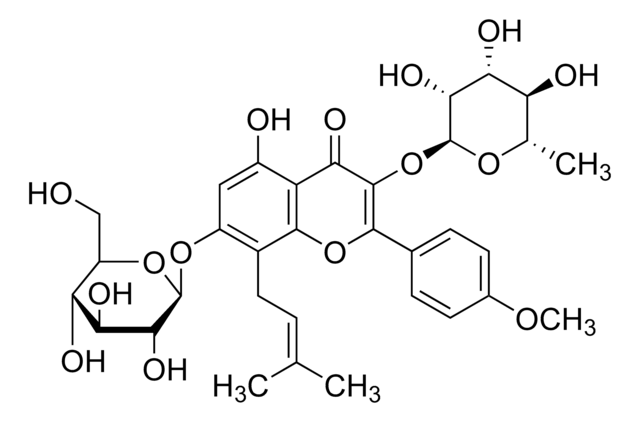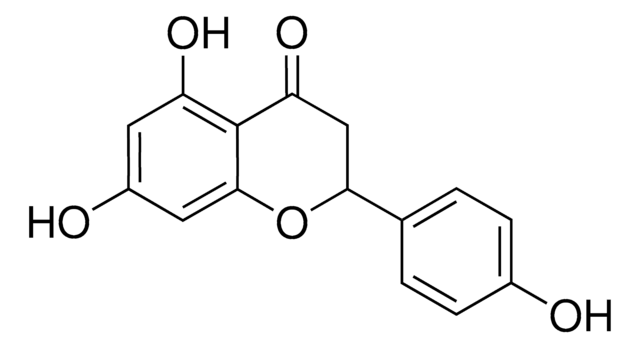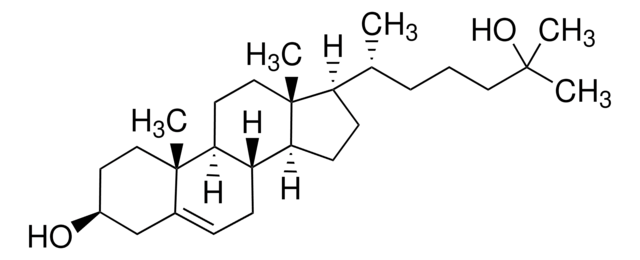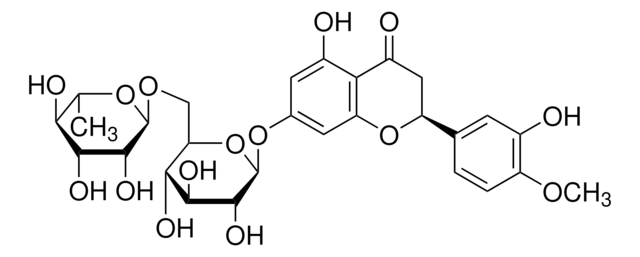SML0551
Icaritin
≥98% (HPLC)
Synonym(s):
3,5,7-Trihydroxy-2-(4-methoxyphenyl)-8-(3-methyl-2-buten-1-yl)-4H-1-benzopyran-4-one
About This Item
Recommended Products
Quality Level
Assay
≥98% (HPLC)
form
powder
color
light yellow to dark yellow
solubility
DMSO: 5 mg/mL, clear (warmed)
storage temp.
2-8°C
SMILES string
COc1ccc(cc1)C2=C(O)C(=O)c3c(O)cc(O)c(C\C=C(\C)C)c3O2
InChI
1S/C21H20O6/c1-11(2)4-9-14-15(22)10-16(23)17-18(24)19(25)20(27-21(14)17)12-5-7-13(26-3)8-6-12/h4-8,10,22-23,25H,9H2,1-3H3
InChI key
TUUXBSASAQJECY-UHFFFAOYSA-N
Looking for similar products? Visit Product Comparison Guide
Biochem/physiol Actions
Features and Benefits
Storage Class Code
11 - Combustible Solids
WGK
WGK 3
Flash Point(F)
Not applicable
Flash Point(C)
Not applicable
Choose from one of the most recent versions:
Certificates of Analysis (COA)
Don't see the Right Version?
If you require a particular version, you can look up a specific certificate by the Lot or Batch number.
Already Own This Product?
Find documentation for the products that you have recently purchased in the Document Library.
Articles
Sigma-Aldrich offers many products related to JAKs for your research needs.
Peroxisome proliferator activated receptors (PPARs) are members of the nuclear hormone receptor superfamily of ligand-activated transcription factors that are related to retinoid, steroid and thyroid hormone receptors.
The mitogen-activated protein kinase (MAPK) family consists of both stress activated (SAPK) and mitogen-activated (MAPK) protein kinases. They form a network of signal transduction cascades that mediate cellular responses to a diverse range of stimuli, including growth factors, chemical or osmotic stress, irradiation, bacterial infection and proinflammatory cytokines.
Our team of scientists has experience in all areas of research including Life Science, Material Science, Chemical Synthesis, Chromatography, Analytical and many others.
Contact Technical Service







